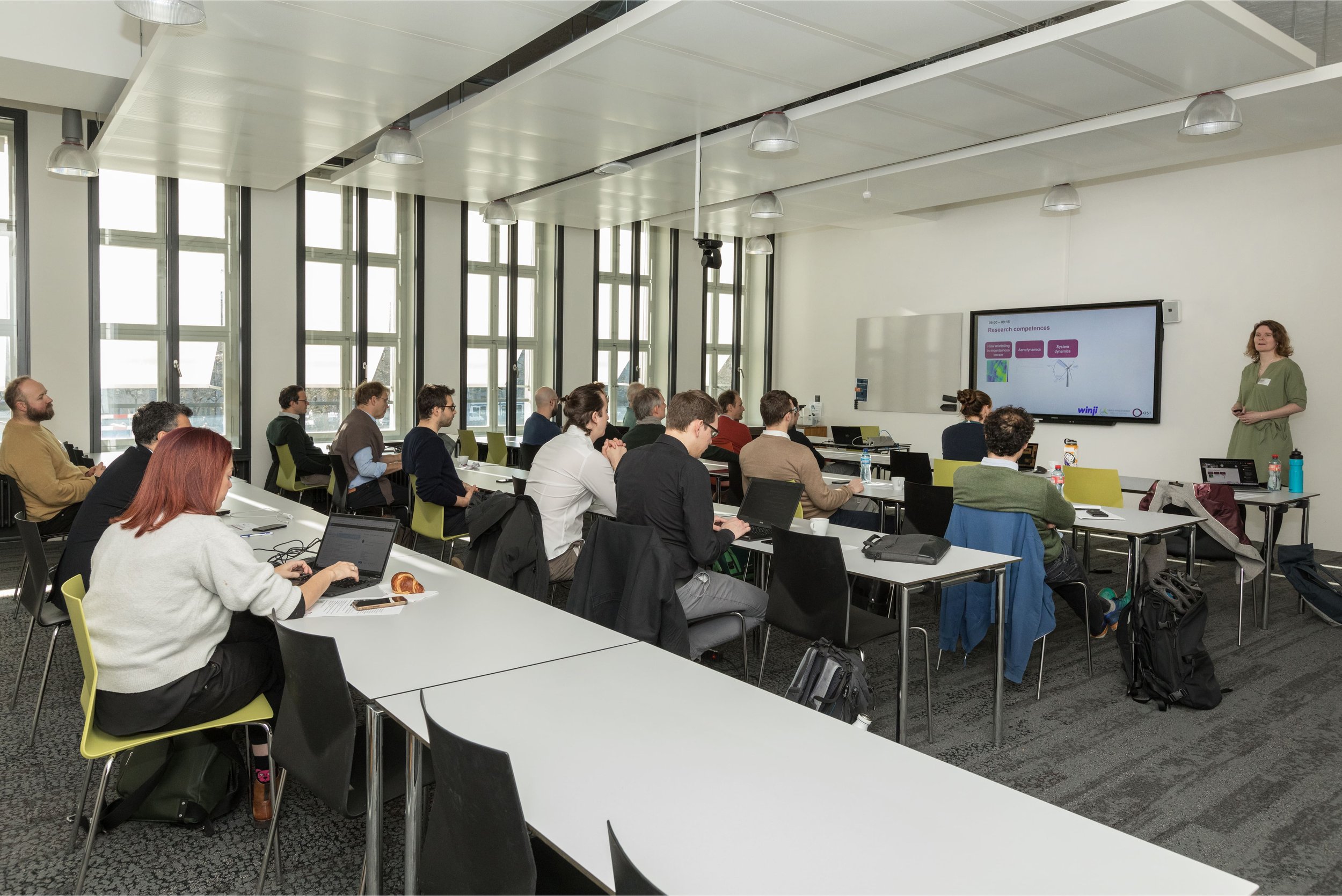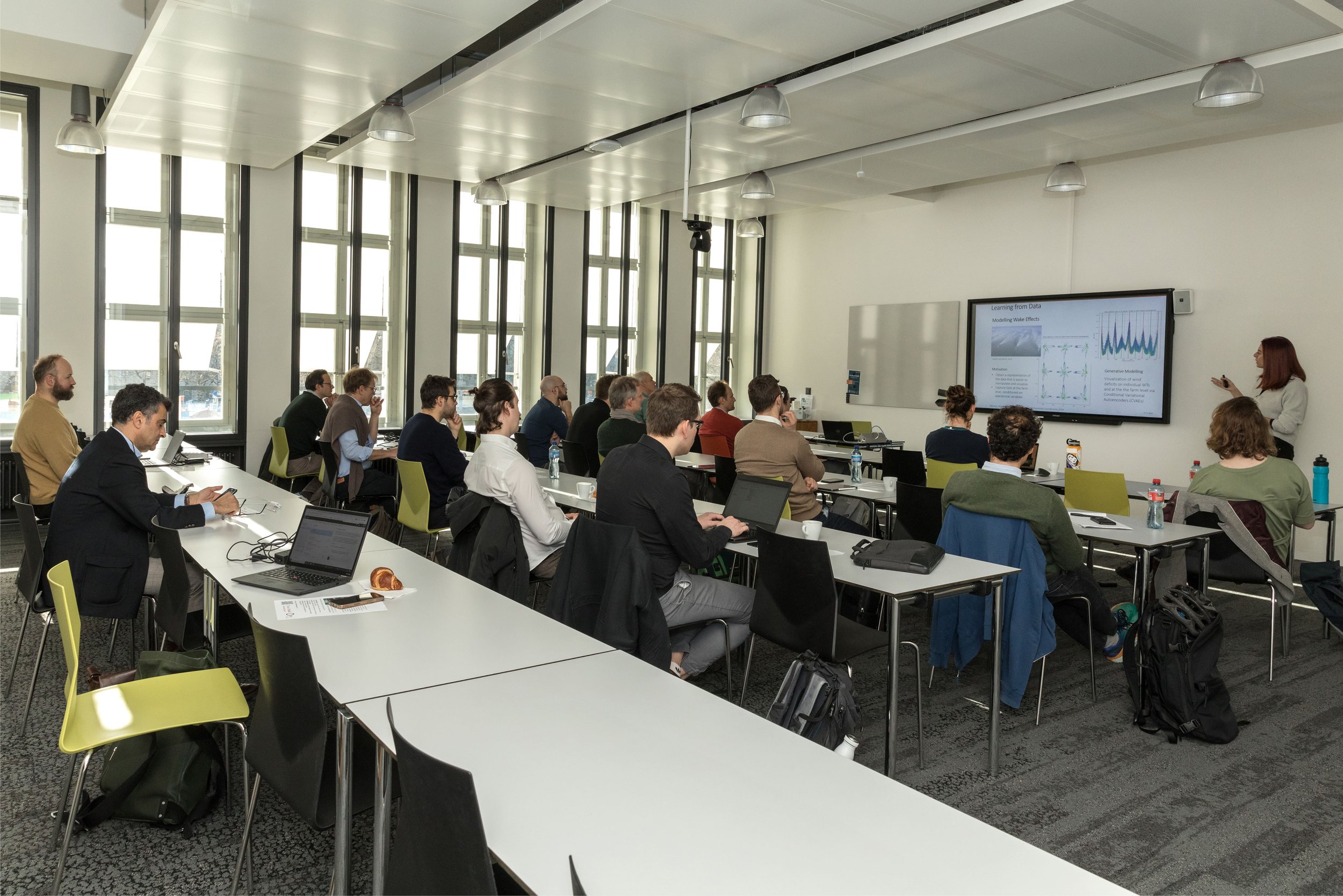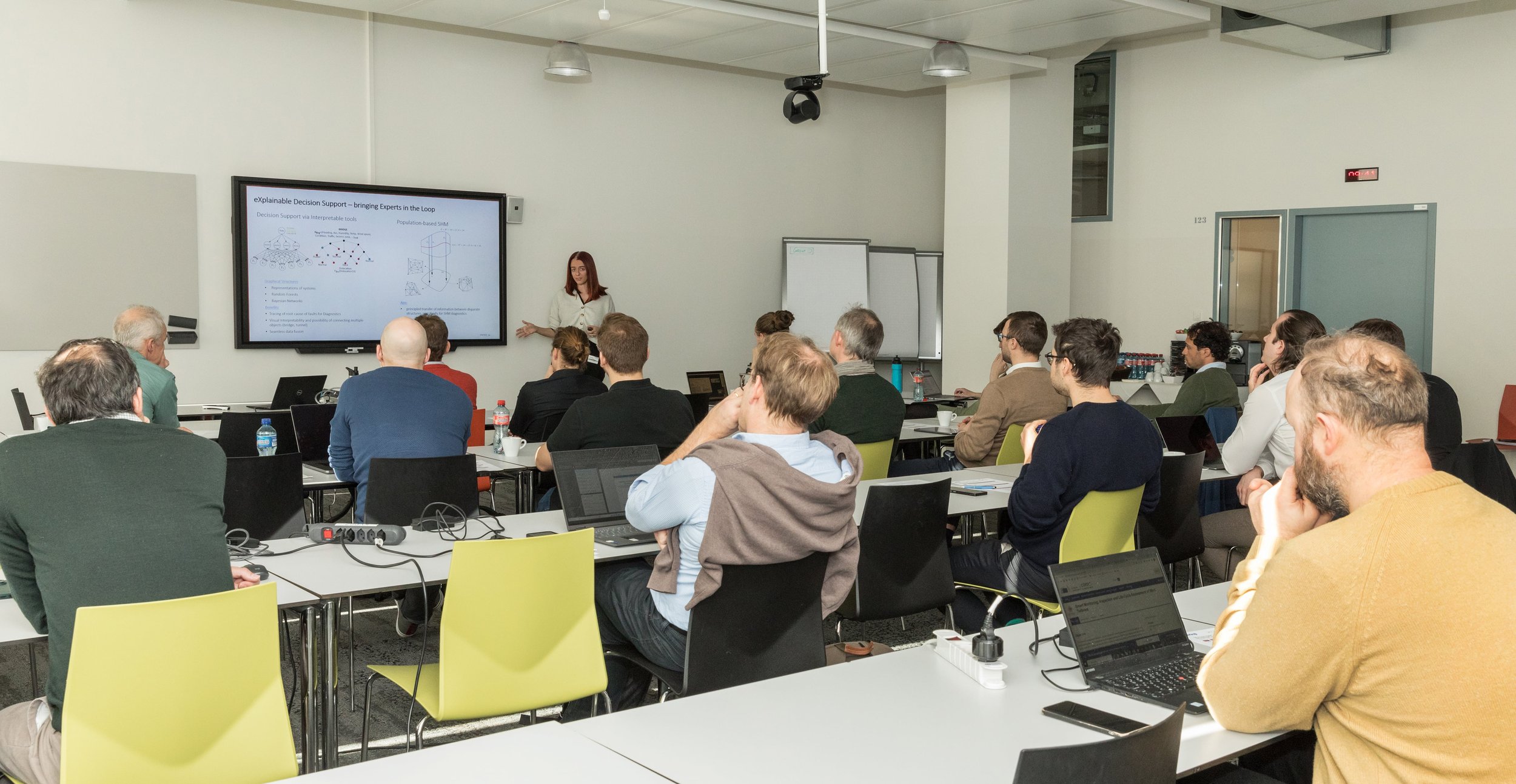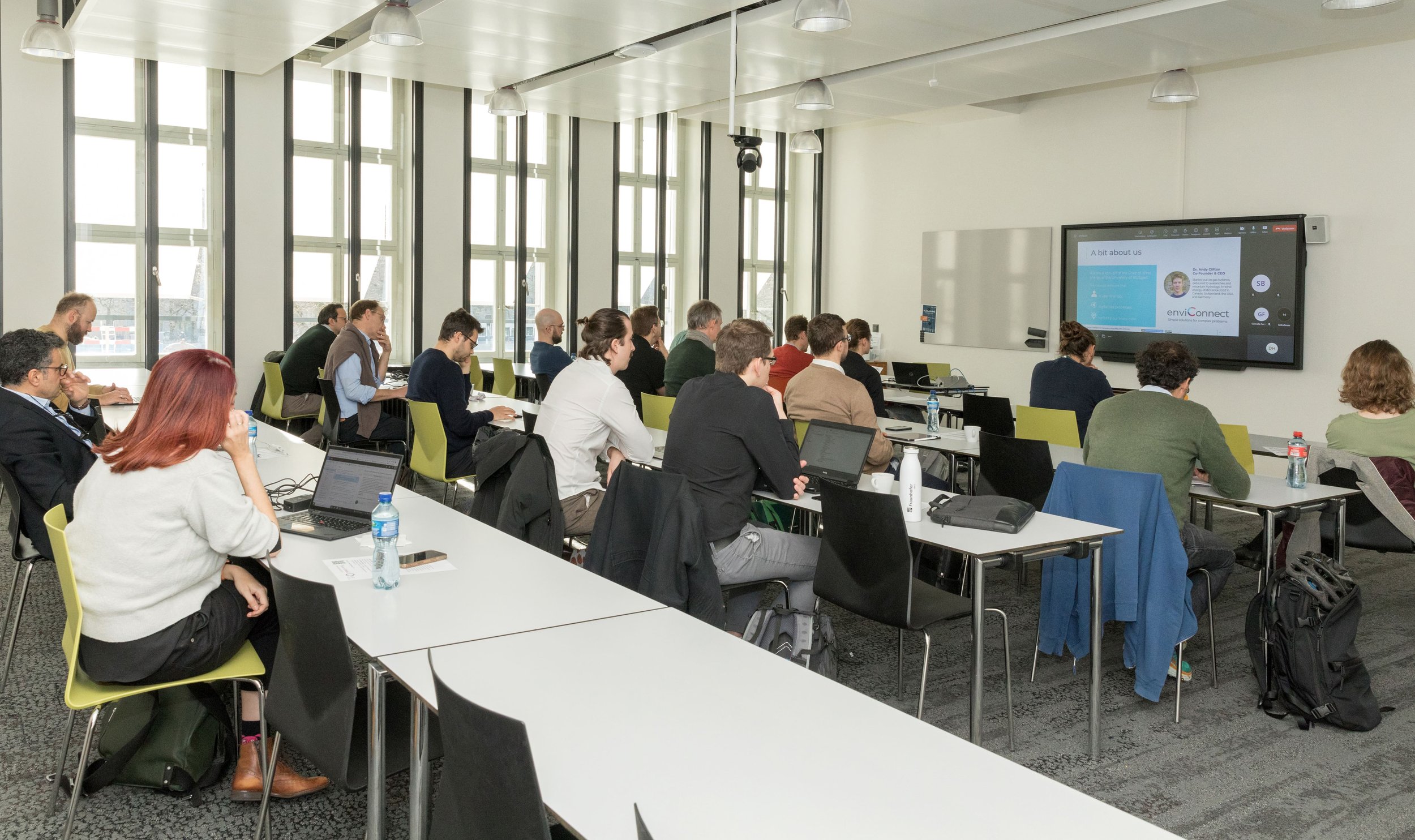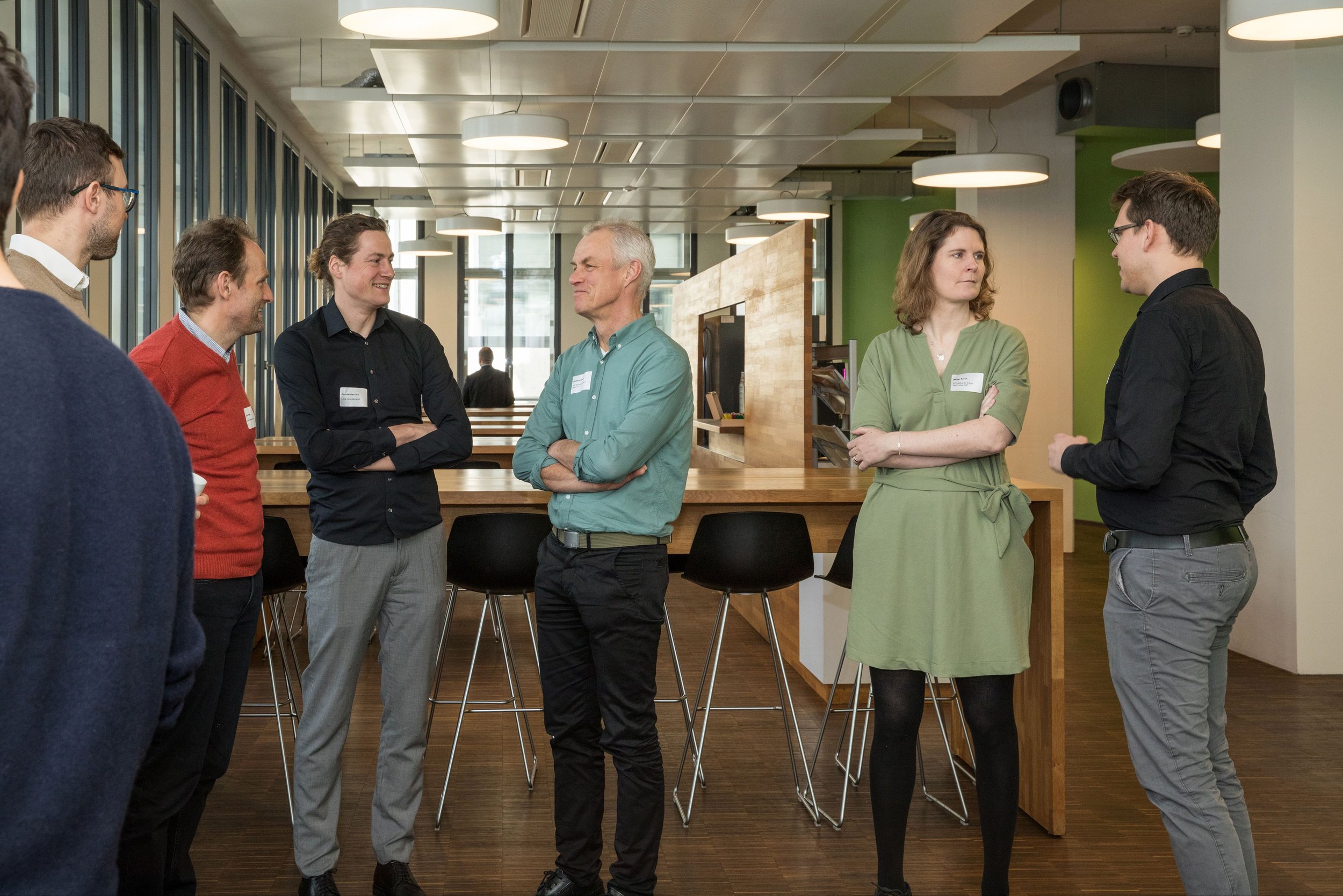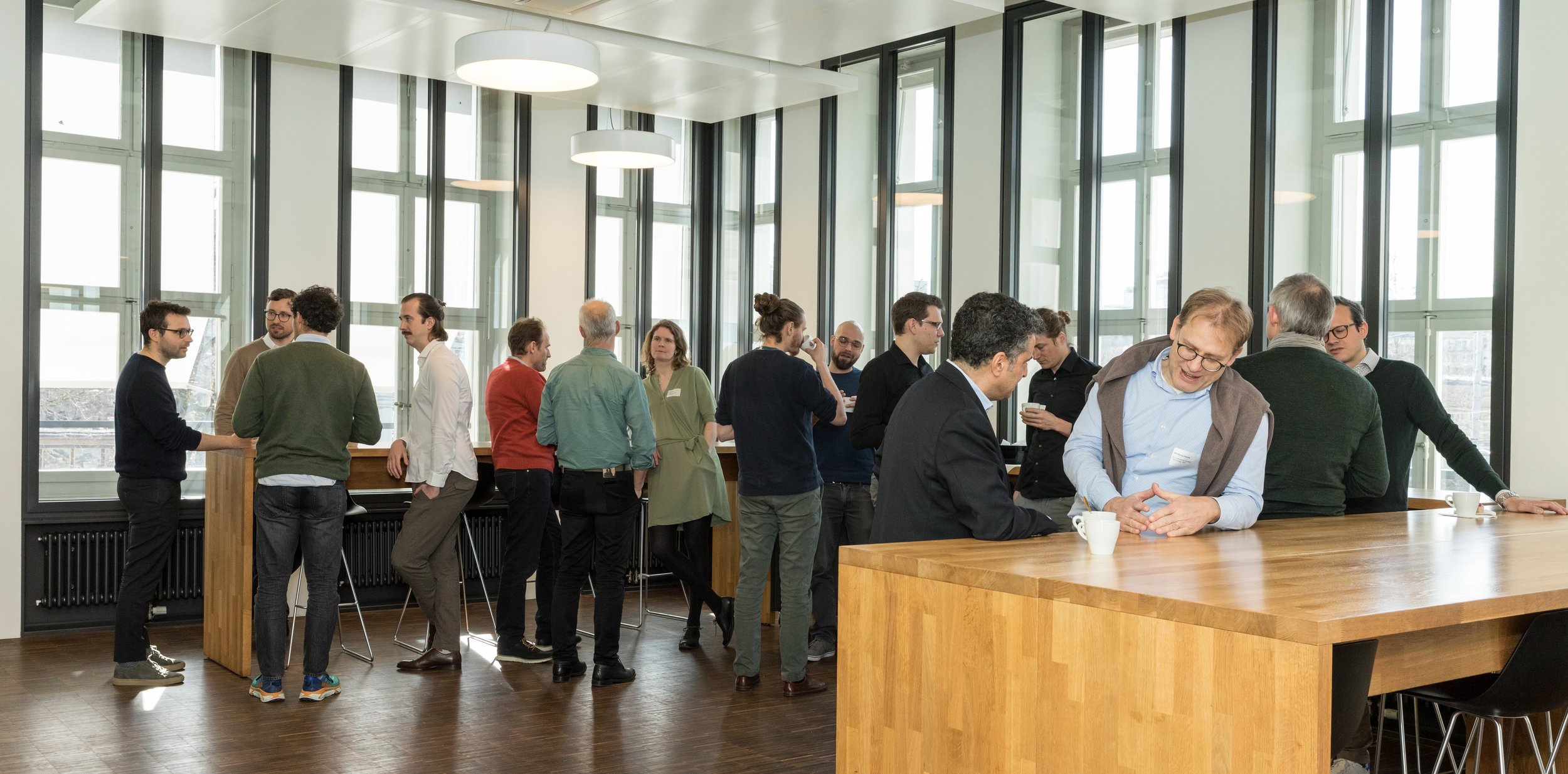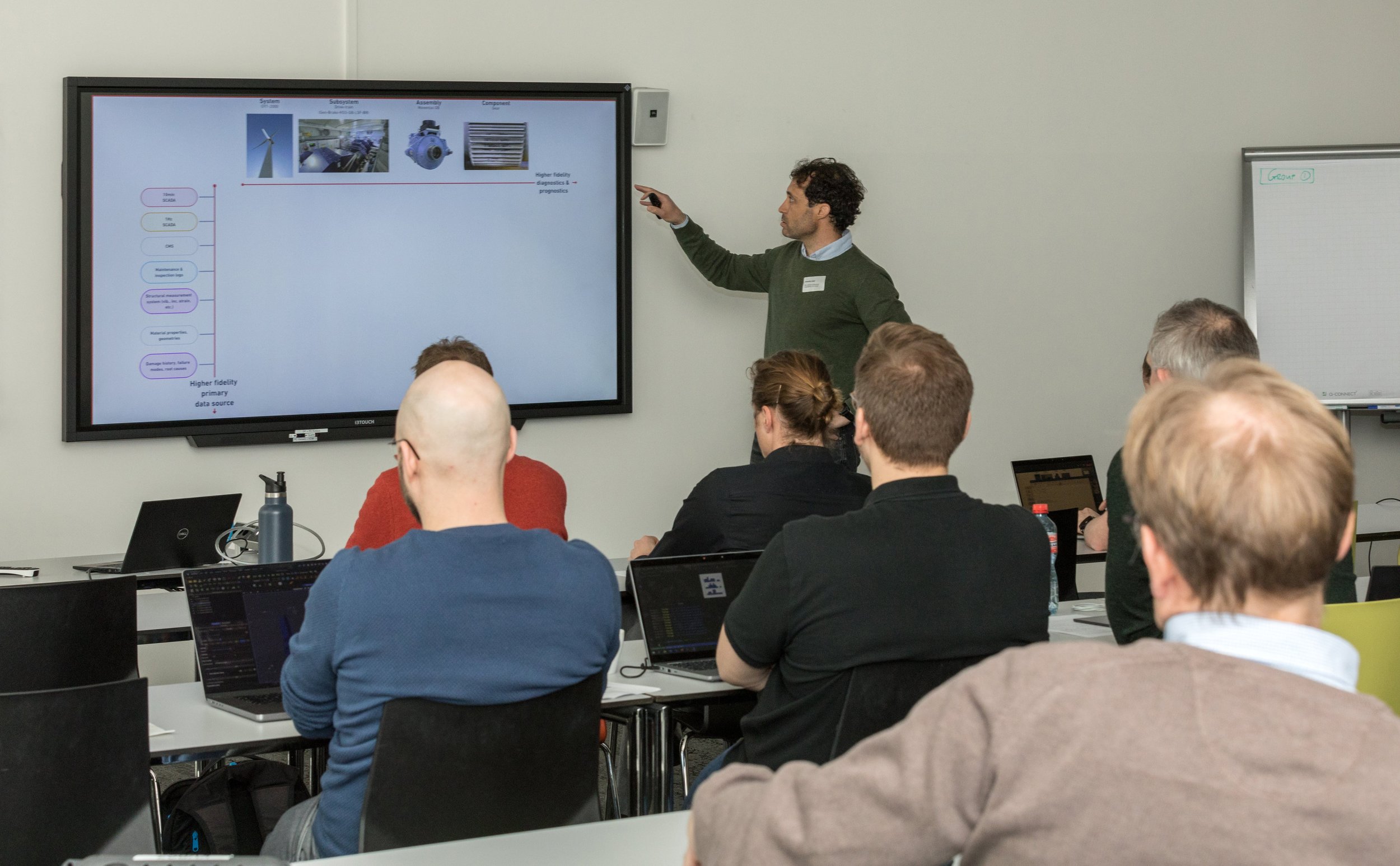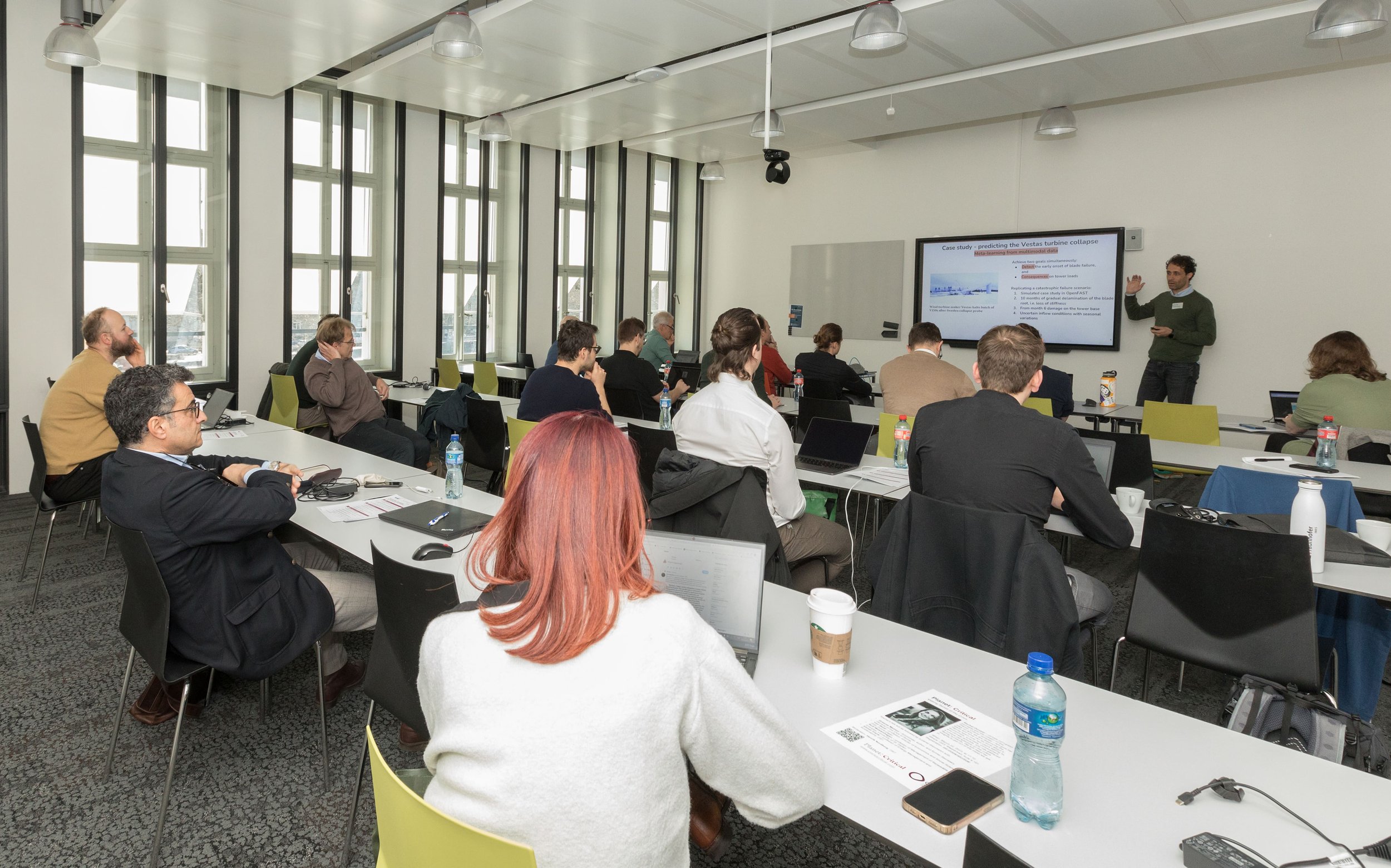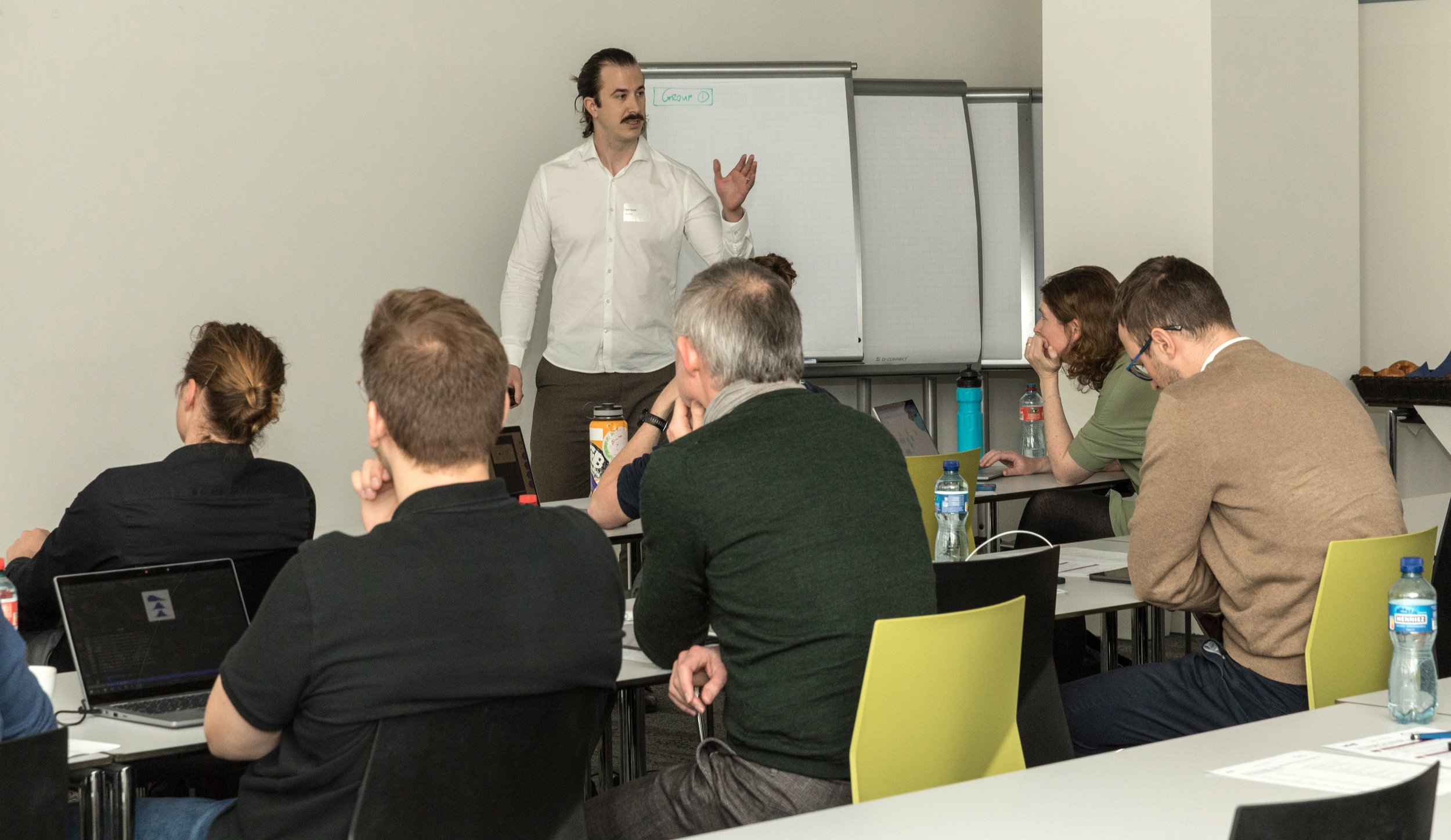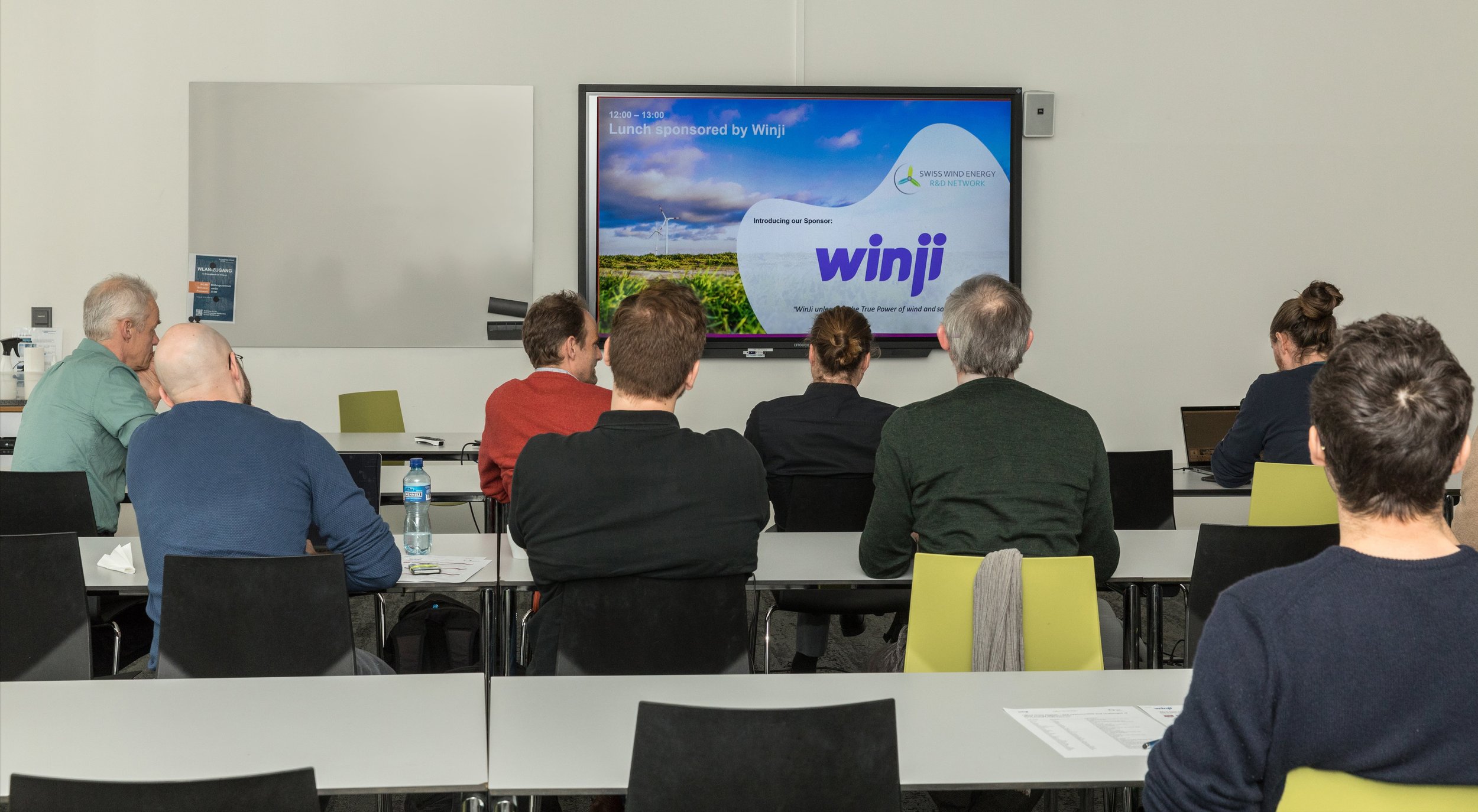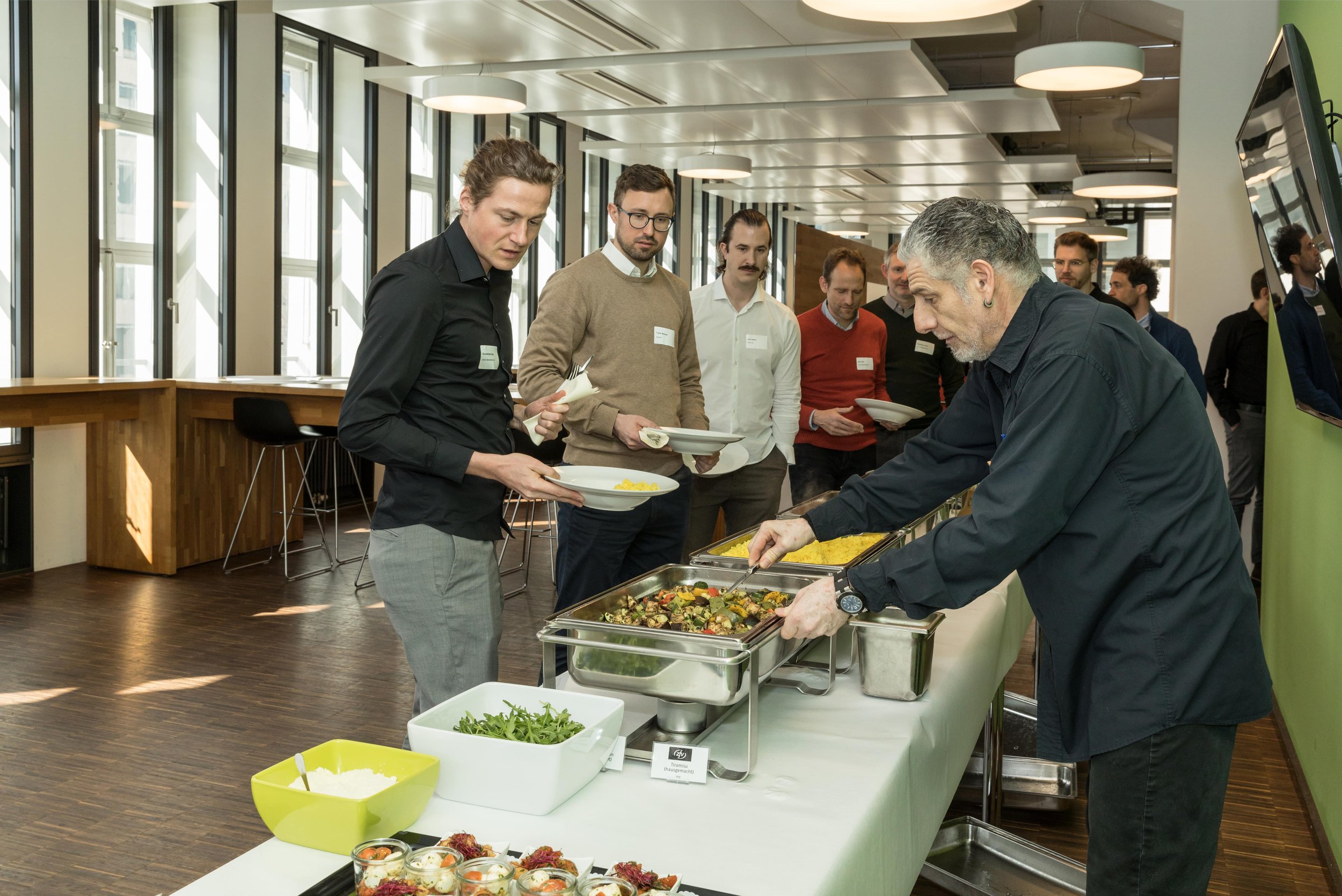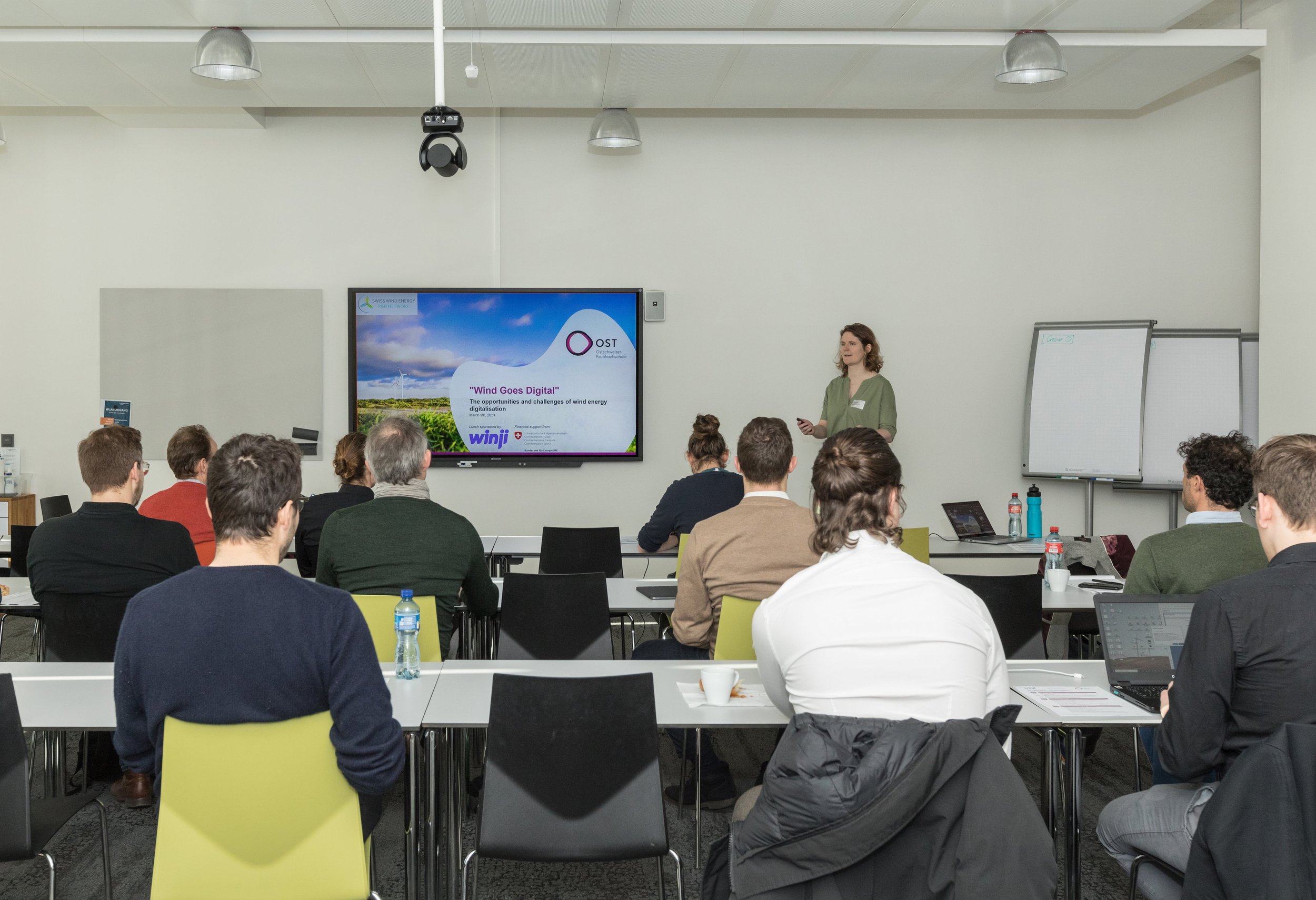Wind energy is one of the key technologies for achieving our ambitious net zero goals. For this, a significant expansion of wind energy deployment is needed, which poses several technical, political and social challenges. Digitalisation is one of the key drivers for reducing the costs and risks of wind energy and thus achieving these goals. For this reason, the Wind Energy Innovation Division at the Institute of Energy Technology at the Eastern Switzerland University of Applied Sciences (OST) focuses its activities on developing tools for addressing the challenges of the implementation of digitalisation in wind energy. In order to bring people together to discuss these challenges, we ran a one-day hybrid workshop ""Wind Goes Digital" - The opportunities and challenges of wind energy digitalisation together with the Swiss Wind Energy R&D Network. The feedback from the 40 participants was very positive, and they particularly enjoyed meeting new people and getting to dig into specific topics in detail.
The importance of digitalisation
In the first session we first heard from Sarah Barber, Head of the Wind Energy Innovation Division at the Eastern Switzerland University of Applied Sciences (OST), about what digitalisation is and why it is important in wind energy. “Digitalisation” is the industry-wide use of data and digital technologies to create value. It is becoming increasingly important in the industry because we rely more and more upon data and data exploitation to maintain competitive advantage. A quiz at the start of her presentation showed that less than half the participants chose the correct definition of the word “digitalisation” from a choice of three phrases. She gave one example of a new project at OST, WeDoWind. WeDoWind is a method that enables people from all over the works to work together, and to exchange and manage data and knowledge in a safe environment, in such a way that a mutually beneficial win-win situation is created. Find out more here.
Key-note talks
Then we heard from Eleni Chatzi, Head of the Chair of Structural Mechanics and Monitoring at ETH Zurich (Switzerland), about robust monitoring for wind energy infrastructure: toward augmented twins. She mainly talked about how her group develops so-called “hybrid models”, which fuse data and physics-based models for learning, monitoring and twinning. She presented an example of the Aerosense project, a collaboration between her group Sarah Barbers group at OST. The aim of this project is to develop a novel MEMS-based aerodynamic surface pressure and aeroacoustic measurement system for wind turbine blades. As part of this project, a deep learning model was trained on simulated data, which monitors leading edge erosion by detecting and classifying the degradation severity (see more here). Very recent, and not yet published, work includes aerodynamic flow reconstruction from sparse sensing.
Before the first coffee break, Andy Clifton, CEO and founder of enviConnect (Germany), presented the challenges of digitalisation in wind energy. He started by introducing the three "Grand Challenges" for the digitalisation of wind energy, identified by a working group drawn from across the wind energy industry and published in the journal, "Wind Energy Science" (preprint at https://doi.org/10.5194/wes-2022-29) The three Grand Challenges are: (1) Data: creating FAIR data frameworks; (2) Culture: connecting people and data to foster innovation; (3) Coopetiton: enabling collaboration and competition between organisations. He then discussed how to transform the “vicious cycle”, which traps new ideas for digitalisation, into the “virtuous cycle”, which provides the necessary conditions for developing and demonstrating the value of new digital tools, as shown in Figure 1. Read more here.
Examples of digitalisation
After the coffee break, we heard from five people in the wind energy industry who are developing digital solutions. Imad Abdallah from ETH Zurich (Switzerland) talked about damage diagnostics via an ensemble of collaborative analysis models. Daniel Heid from WinJi AG (Switzerland) talked about using the vast amounts of existing data to generate new insights. Tom Clark from Octue (UK) talked about powerful power curves. Christopher Gray from I4see (Austria) talked about wind turbine fleet optimisation: simple solutions for solving complex problems at scale. Nikolay Krasimirov Dimitrov from DTU Wind (Denmark) talked about solving challenges by digital means. We then held a Q&A session and noted down the main challenges seen by the presenters during the development of their tools.
Following lunch, which was kindly sponsored by WinJi AG (Switzerland), we continued with five presentations of examples from outside the wind energy industry. Gionata Ferroni from EnergyVue (UK) talked about an innovative platform architecture that enables the integration of energy data from multiple solar plants. Charlie Henderson from Stacker Group (USA) talked about levelling the playing field: creating open access to collaboration networks. Daniel Wesierski from Gdansk University of Technology (Poland) talked about deep video enhancement of intraoral scenes. Guido Schuster from OST (Switzerland), presented a short history of the only EASA qualified 6DOF VR helicopter pilot training simulator. Finally, Djamel Lakehal from Afry (Switzerland) presented advanced engineering and analytics of plant data using their e-DAP tool. We then held a Q&A session and noted down the main challenges seen by the presenters during the development of their tools.
Developing new solutions together
The main challenges discussed during the day so far were then noted down, grouped and prioritised by the participants. A total of five different groups were formed (three in-person and two online) to develop possible solutions to these challenges. The challenges discussed were: (1) How to turn ideas into real products? How to demonstrate their value to the community? (one online group, one in- person group); (2) How to make collaboration really work? (one in-person group); (3) How to deal with “missing” data in the sense of too low frequency, too few measurement points on a particular component, too few wind turbines measured, poor quality of data, etc.? (one online group, one in-person group) The sessions were moderated and supported by organisers from OST. The results were then presented and discussed back in the large group. According to the very positive feedback from the participants, these workshops not only allowed new ideas to be developed, but many of the participants made some new contacts, learned something new and initiated a new collaboration.
Open source for driving coopetition
To round the day off, Jason Fields from the National Renewable Energy Laboratory (USA) presented a strategy for improving coopetition in wind energy, one of the Grand Challenges introduced in Andy Clifton’s talk at the start of the day. “Coopetition” is defined as “Collaboration with competitors for mutual benefit”. In particular, he talked about the importance of open source code and open innovation, and mentioned existing open source tools such as OpenFAST, PyWake, ENTR Alliance and Brightwind. According to the RedHat Open Source Report, 82% of IT leaders are more likely to select a vendor who contributes to the open source community! He concluded that open source projects are both public goods and good for business, that open data standards are the start of a disruptive modern data architecture, and that coopetition is the foundation of modern digital businesses.
What next?
Many of the challenges discussed at the workshop are being addressed within IEA Wind Task 43 (Digitalisation), which Sarah Barber from OST is strongly involved in as a member of the Organising Committee. The aim of this task is to build up a central knowledge hub for sharing, developing and testing innovative tools for accelerating digital matruity in wind energy. Please get in touch with Sarah Barber (sarah.barber@ost.ch) if you are interested in getting involved!
See you at our next event “Networking Event Series Wind Energy 2023” on Sep. 26th, 2023! Sign up to receive a notification when registration is open here.


